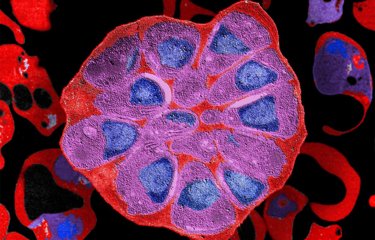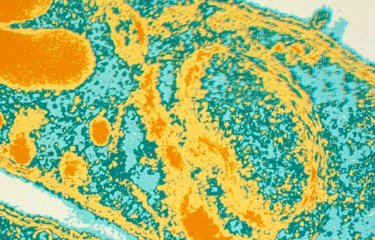By engrafting human hematopoietic stem cells into mice, a team from the Institut Pasteur, Inserm and the CNRS was able to maintain the Plasmodium vivax parasite in vivo, providing a novel model to explore therapeutic strategies.
Malaria remains a major public health problem, with 241 million cases and 627,000 deaths worldwide in 2020, according to the latest WHO figures. Plasmodium vivax, the most widespread malaria agent, has characteristics that make it difficult to control and eliminate. None of the current treatments is able to eliminate "dormant" parasites in the liver, which are responsible for relapse. A study by scientists from the Institut Pasteur, published in Nature Communications, proposes a novel animal model to facilitate in vivo research on the parasite.
To reconstitute interactions between P. vivax and its human host more effectively, the scientists worked on mice engrafted with human hematopoietic stem cells. "The bone marrow of these mice is capable of producing human blood cells, including red blood cells that are targeted by the parasites," explains Sylvie Garcia, a group leader in the Biology of Host-Parasite Interactions Unit. "While the parasite can be observed in the bloodstream, it is also found in the bone marrow, which is a reservoir in humans for P. vivax human-to-mosquito transmission stages." Studying these stages more closely could help elucidate the way in which the parasite spreads, with the aim of curbing transmission.
Facilitating drug and vaccine discovery
The model recreates the P. vivax blood stage, which coincides with the onset of symptoms in patients and during which the parasite is transmitted to mosquitoes. "Previous mouse models were unable to produce human red blood cells. With this novel model, we can obtain parasite forms that are transmissible to mosquitoes, then from mosquitoes to humans. Until now, we could only obtain these forms from mosquitoes fed with the blood of infected patients," continues Sylvie Garcia. This meant obtaining blood samples on a very regular basis, representing a major obstacle for research which this technique overcomes.
By producing immature red blood cells in the bone marrow at the stage when they are infected by P. vivax, these mice provide an in vivo model in which the parasite can be maintained. This is a major breakthrough for a pathogen that cannot be cultured long term in vitro and will prove useful for testing new drug and vaccine candidates. The model could also be used to study other diseases linked with red blood cells, like sickle cell anemia and thalassemia.
Source :
Humanized mice for investigating sustained Plasmodium vivax blood-stage infections and transmission, Nature Communications, 15 Juillet 2022
Camilla Luiza-Batista1,2, Sabine Thiberge1, Malika Serra-Hassoun1, Flore Nardella1, Aurélie Claës1, Vanessa C. Nicolete3, Pierre-Henri Commère4, Liliana Mancio-Silva1, Marcelo U. Ferreira3, Artur Scherf1, Sylvie Garcia1
1 - Institut Pasteur, Université Paris Cité, Inserm U1201, CNRS EMR9195, Unité de Biologie des Interactions Hôte-Parasite, 75015 Paris, France
2 - Sorbonne Université, École Doctorale Complexité du Vivant, Paris, France
3 - Department of Parasitology, Institute of Biomedical Sciences, University of São Paulo, São Paulo, Brazil
4 - Institut Pasteur, Université Paris Cité, Cytometry and Biomarkers UTechS, CRT, 75015 Paris, France.






